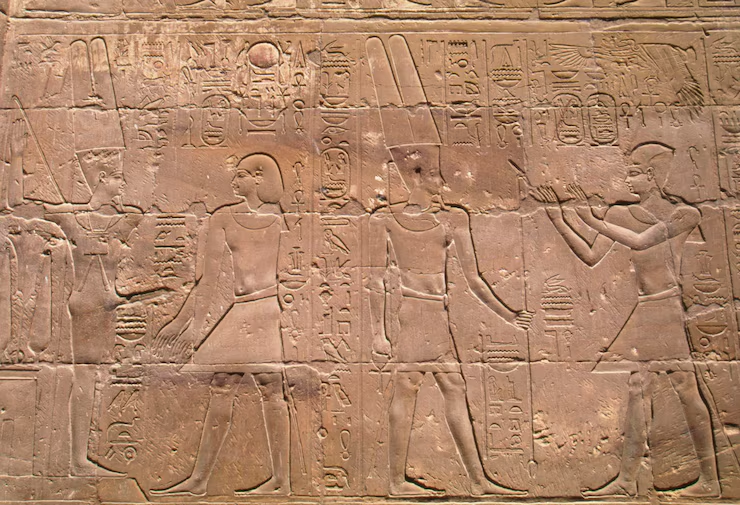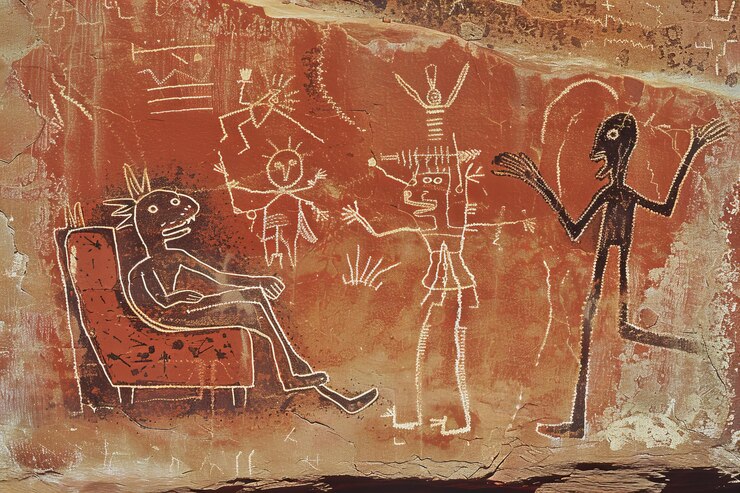Ancient Artz. This blog post is your gateway to exploring the mysteries and wonders of ancient art, revealing its profound impact on our culture today. Whether you’re an art enthusiast or a curious explorer, understanding ancient art offers a glimpse into the minds of those who shaped our world. Together, we’ll uncover the relevance of these age-old masterpieces and set the stage for a fascinating exploration.
The Significance of Ancient Artz
The significance of ancient art transcends mere aesthetics. These creations served as powerful tools for communication, conveying beliefs, stories, and traditions. From the elaborate hieroglyphs of Egypt to the intricate pottery of the Greeks, ancient art was a reflection of society’s core values. It laid the groundwork for the diverse art forms we enjoy today, providing a historical context that continues to influence modern interpretations.
Furthermore, ancient art played a pivotal role in shaping cultural identities. It fostered unity among communities, offering a shared visual language that transcended spoken words. These artworks immortalized historical events, celebrated deities, and conveyed philosophical ideas, leaving an indelible mark on the cultures they originated from. By understanding the significance of ancient art, we grasp the essence of past civilizations and appreciate their enduring legacy in contemporary art.
In essence, ancient art serves as a bridge between the past and present. Its ability to evoke emotions and spark curiosity speaks to its timeless nature. By studying and appreciating these masterpieces, we gain insights into the creative spirit of humanity, discovering a shared heritage that continues to inspire and captivate us.
Discovering Ancient Artz
Our exploration of ancient art begins with a captivating global tour. Each corner of the world boasts unique art forms that reflect the creativity and ingenuity of past civilizations. From the vibrant murals of Mesoamerica to the serene sculptures of Asia, we encounter a rich tapestry of artistic expression.
Let’s start in Egypt, where the grandeur of the pyramids and the intricacy of hieroglyphs transport us to a world of pharaohs and gods. The symbolism embedded in these artworks reveals a society deeply connected to spirituality and the afterlife. Similarly, the frescoes of ancient Greece offer glimpses into the lives of gods and mortals, capturing stories of heroism and divine intervention.
Venturing eastward, we encounter the breathtaking cave paintings of Lascaux, France, which offer a window into prehistoric life. These vivid depictions of animals and hunting scenes reveal early humans’ keen observation of nature and their sense of wonder. In contrast, the delicate brushwork of Chinese ink paintings showcases a harmonious relationship between humans and nature, emphasizing balance and tranquility.
By understanding these diverse art forms, we gain a deeper appreciation for the universal themes and unique perspectives that emerge from ancient art across cultures. Through this exploration, we celebrate the creativity and resilience of humanity, echoing through the ages.
Preservation and Conservation

Preserving ancient art is a vital endeavor that ensures future generations can experience the beauty and wisdom of the past. Yet, the challenges of conservation are immense. Time, environmental factors, and human activity threaten these cultural treasures, making preservation efforts more important than ever.
Conservators employ cutting-edge techniques to safeguard ancient art against deterioration. From climate-controlled environments to advanced restoration methods, these experts work tirelessly to protect fragile artifacts. Despite these efforts, the task is daunting. Preserving ancient art requires collaboration between governments, organizations, and individuals dedicated to safeguarding our shared heritage.
One such challenge is the ethical dilemma of preserving cultural heritage amid political conflicts and looting. Organizations like UNESCO strive to protect endangered sites and artifacts, recognizing their significance to humanity’s collective memory. Through international cooperation, we can ensure that these treasures remain accessible to all, fostering a sense of global unity and shared responsibility.
Conservation is not just about preserving the past; it’s about connecting with our roots and understanding the artistic achievements that continue to inspire us. By supporting and advocating for preservation efforts, we contribute to a legacy that enriches our cultural landscape and deepens our connection to history.
The Impact of Technology on Ancient Artz
In the digital age, technology breathes new life into the study and preservation of ancient art. Advanced imaging techniques allow researchers to examine artworks in unprecedented detail, uncovering hidden layers and previously unknown features. From 3D scanning to virtual reality reconstructions, technology provides innovative ways to interact with these masterpieces.
For instance, 3D printing enables museums and scholars to create accurate replicas of delicate artifacts, ensuring that they remain accessible for study and exhibition. Virtual reality tours transport us to archaeological sites, offering immersive experiences that bring ancient history to life. These technological advancements democratize access to ancient art, allowing audiences worldwide to engage with these treasures.
Digital databases serve as invaluable resources for researchers, cataloging vast collections of ancient art and making them accessible to scholars and enthusiasts alike. Online platforms facilitate collaboration and the exchange of knowledge, fostering a global community of art lovers and experts dedicated to preserving our shared heritage.
Technology not only enhances our understanding of ancient art but also bridges the gap between past and present. By leveraging digital tools, we continue to unlock the mysteries of ancient civilizations, deepening our appreciation for their cultural contributions and inspiring future generations to explore the wonders of the past.
Ancient Artz in Today’s World
Fast-forward to the present, where ancient art continues to wield influence over contemporary artists and enthusiasts. These timeless creations inspire modern interpretations, serving as a wellspring of creativity for painters, sculptors, and designers. The motifs, techniques, and themes of ancient art offer a rich tapestry for reimagining the present.
Take, for example, the resurgence of classical art styles in contemporary design. Influences from ancient Greece and Rome manifest in architecture, fashion, and interior design, embodying a sense of elegance and timelessness. Similarly, traditional Asian art forms inspire innovative approaches in visual storytelling, infusing modern works with depth and cultural significance.
The enduring appeal of ancient art lies in its ability to convey universal themes that resonate across generations. Love, heroism, spirituality, and the human condition are all explored through the lens of ancient art, inviting reflection and connection. By weaving these themes into modern creations, artists pay homage to our shared heritage while pushing the boundaries of artistic expression.
In this way, ancient art serves as a cultural touchstone, bridging the past and present. It invites us to explore the depths of human creativity and celebrate the rich tapestry of ideas that continue to shape our world. By engaging with ancient art, we discover new perspectives and forge connections with the stories and traditions that have shaped us.
How to Engage with Ancient Artz

Engaging with ancient art is an enriching experience that deepens our understanding of history and culture. Whether you’re an art enthusiast or a curious beginner, there are various ways to explore, learn about, and support ancient art forms.
Begin your exploration by visiting museums and art galleries, where you can experience ancient art firsthand. Many institutions offer guided tours and educational programs, providing valuable insights into the historical context and significance of different artworks. Museums also host special exhibitions and events, offering opportunities to engage with curators and experts in the field.
Consider participating in workshops and lectures that focus on ancient art techniques and themes. These events provide hands-on experiences and deepen your appreciation for the craftsmanship and creativity of past civilizations. By learning from experts, you’ll gain new perspectives on the artistic processes and cultural narratives that shaped ancient art.
Lastly, support preservation initiatives and organizations dedicated to safeguarding ancient art. Donations and volunteer opportunities contribute to the ongoing efforts to protect and conserve cultural heritage. By advocating for the preservation of ancient art, you become a steward of our shared history, ensuring that future generations can continue to appreciate and learn from these treasures.
Conclusion
In conclusion, ancient art is a testament to the enduring power of human creativity and expression. Its significance transcends time, offering insights into the cultural, social, and spiritual fabric of past civilizations. By exploring ancient art, we connect with our roots and discover a shared heritage that continues to inspire and enrich our lives.




